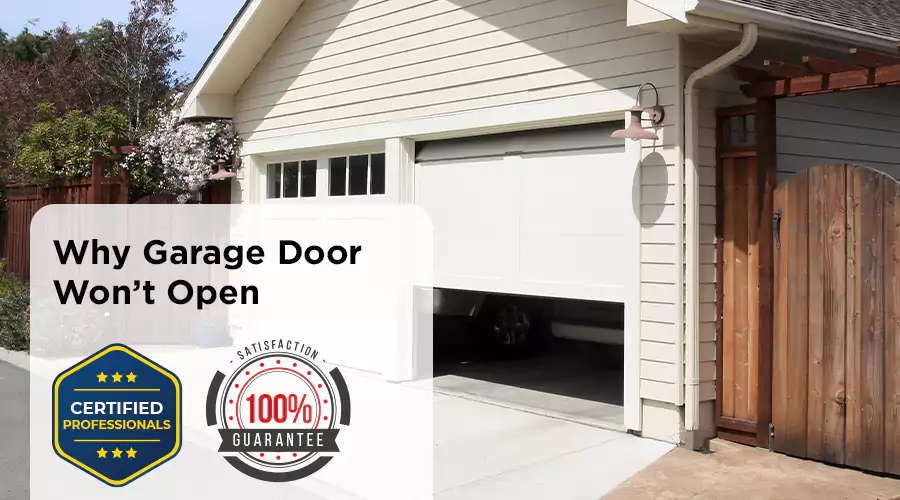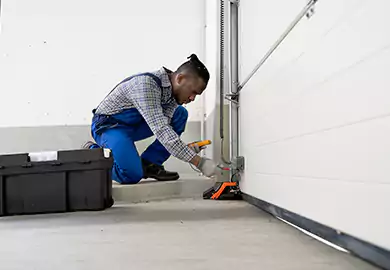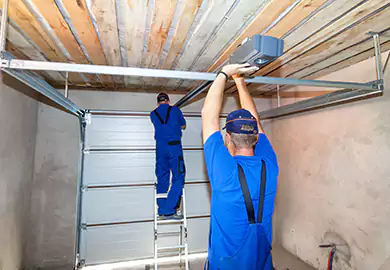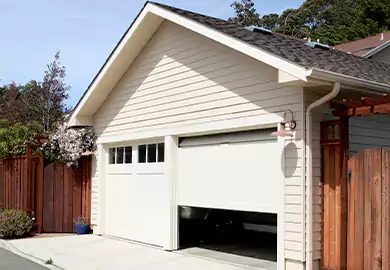You can easily have your day screwed when your garage is stuck. A broken garage door be more than just a trouble; that should be addressed as a problem right away, whether you're attempting to park safely at night or are rushing late for work. As a house owner, you depend on the smooth functioning garage door. But then as any mechanical mechanism, over the time it can break down. This guide will cover the most common issues with garage doors, their causes, and some general recommendations that could help you fix either by yourself or by asking an expert assistance. It provides reliable guidance supported by expertise by drawing on real-world troubleshooting techniques.
Symptoms of a Garage Door Stuck
When your garage door is stuck, you may notice:
- The opener runs, but the door stays shut
- Jerky or uneven movement
- Loud grinding or screeching noises
- The door opens only partially or reverses direction
- An emergency release that is disconnected or cannot be opened manually
These warning signs can guide your garage door troubleshooting steps.
Top Reasons Why You’re Garage Door Won’t Open
Below are some of the most common and fixable reasons your garage door might not open:
| Problem | Symptoms | Solution |
|---|---|---|
| Power Source Issues | No noise, no light, opener unresponsive | Check outlet, circuit breaker, and reset GFCI |
| Dead Remote Batteries | Remote doesn’t work, wall switch does | Replace batteries and reprogram the remote |
| Garage Door Sensor Issues | Door tries to close, then reopens | Clean and align sensors |
| Broken Springs | Door won’t lift or only lifts a few inches | Call a professional—spring replacement is unsafe |
| Disconnected or Snapped Cables | Door hanging at an angle or stuck | Requires professional cable replacement |
| Manual Lock Engaged | Door won’t move despite opener running | Unlock manually from inside |
| Track Misalignment | Grinding noise, door stuck or uneven | Inspect and adjust tracks |
| Garage Door Motor Not Working | Motor hums but door doesn’t move | Test with backup power; inspect motor wiring |
| Opener Malfunction | Motor runs but door doesn’t move | Check gear, belt/chain drive, or logic board |
1. Power Source Problems
One of the most overlooked causes is a loss of power. If your garage door opener doesn’t respond at all—no noise, no lights—start here:
- Ensure the opener is plugged in
- Check your circuit breaker or fuse box
- Look for a tripped GFCI outlet (especially if it shares a circuit with another appliance)
Pro Tip: Always try the wall switch before assuming the opener is broken.
2. Dead Batteries in the Remote
If your garage door remote isn’t working, the fix could be as simple as replacing the batteries.
Signs the batteries are dead:
- The wall-mounted switch works, but the remote doesn’t
- Remote LED doesn’t light up
- The operating range is significantly reduced
After replacing the batteries, reprogram the remote to resync it with your opener.
3. Garage Door Sensor Issues
Modern garage doors have photo eye sensors that prevent the door from closing on people, pets, or objects. As part of regular Garage Door Maintenance, if these sensors are dirty or misaligned, the door may stop or reverse when closing.
What to Check:
- Clean lenses with a soft, dry cloth
- Ensure both sensors are facing each other
- Check for any flashing lights or error indicators
DIY Fix:
- Clean the lenses
- Realign the sensors until indicator lights are steady
- Remove debris blocking the sensor beam
Important: Never bypass or tape over sensors—it’s a serious safety hazard.
4. Broken Garage Door Springs
Torsion or extension springs lift the heavy door. If one breaks, the opener might try to work but can’t open the door.
How to Tell:
- You heard a loud bang or snap earlier
- The door feels unusually heavy
- A visible break in the spring above the door
Do not attempt to replace springs yourself—they are under high tension and can be dangerous. Always call a professional.
5. Snapped or Disconnected Cables
Garage door cables work with the springs. If one snaps:
- The door may look crooked or hang on one side
- It may get stuck mid-movement
- You might see a loose or dangling cable
This repair should be done by a technician to prevent further damage or injury.
6. Manual Lock Engaged
A manual lock is a feature of some garage doors, usually with a handle in the middle. If this lock is engaged:
- The door won’t move, even though the opener is running
- You may hear a motor hum with no movement
Unlock it manually from the inside. This often happens after a power outage or recent maintenance.
7. Limit Settings or Travel Adjustments
Sometimes the door won’t open fully due to incorrect opener settings. The opener uses these parameters to determine how far to move the garage door.
How to Fix:
- Refer to your opener’s manual
- Adjust the "up travel" or limit switch settings
- Test the door after each adjustment
8. Track Misalignment or Obstruction
The rollers cannot operate properly if the garage door track is twisted or blocked.
Signs of Track Issues:
- Grinding or squeaking noises
- Uneven door movement
- Gaps between rollers and the track
Sometimes a rubber mallet can be used to straighten out little bends. For major misalignment, call a professional.
9. Garage Door Motor Not Working
If the motor hums but the door doesn’t move, it may be jammed or burnt out. Common causes include:
- Blown capacitor
- Worn gears under the gear cover
- Burnt or stripped drive components
Troubleshooting Tip: Disconnect the opener and try lifting the door manually. If it doesn’t move, the issue is likely mechanical (e.g., broken springs), not electrical.
10. Faulty Garage Door Opener
Sometimes the problem is with the opening unit itself.
Symptoms:
- Stripped gear or worn drive system
- Broken belt or chain
- Faulty circuit or logic board
Many modern openers display error codes—refer to your manual or contact support for interpretation and repair options.
11. Frozen or Weather-Affected Garage Door
In winter, garage doors may freeze shut or contract, leading to operational issues.
Prevention Tips:
- Apply silicone-based lubricant to rubber seals
- Keep snow and ice cleared from the base of the door
- Consider installing an insulated bottom seal
12. Manual Release Problems
If the garage door won’t open manually, the emergency release might be jammed or disconnected.
What to Check:
- Is the manual/emergency release cord engaged?
- Can you lift the door smoothly by hand?
If not, it’s time to call a professional.
Who Should Fix Garage Door Problems: DIY vs. Professional Help
DIY Garage Door Fixes:
- Replacing remote batteries
- Cleaning and aligning sensors
- Resetting the circuit breaker or GFCI
- Lubricating hinges, rollers, and tracks
- Removing small track obstructions
- Resetting the garage door opener
Call a Professional If:
- Springs or cables are broken
- The opener has stripped gears or internal damage
- The door is severely misaligned
- The issue persists after multiple DIY attempts
Preventive Maintenance Tips
- Monthly: Clean tracks and sensors
- Quarterly: Lubricate hinges, rollers, and springs with garage-specific lubricant
- Biannually: Test the auto-reverse mechanism (place a board under the door—it should reverse upon contact)
- Annually: Have a professional inspect springs, cables, and opener system
Conclusion
A garage door that won’t open is more than a nuisance—it can affect your schedule, safety, and security. Fortunately, by understanding the most common causes and knowing how to address them, you’re already on your way to a solution. From electrical fixes to mechanical malfunctions, some issues are easy DIY Repairs, while others require expert attention. With regular maintenance and a proactive approach, you can keep your garage door functioning smoothly for years to come. Don’t wait until it’s stuck—stay informed, stay prepared, and take action early.





